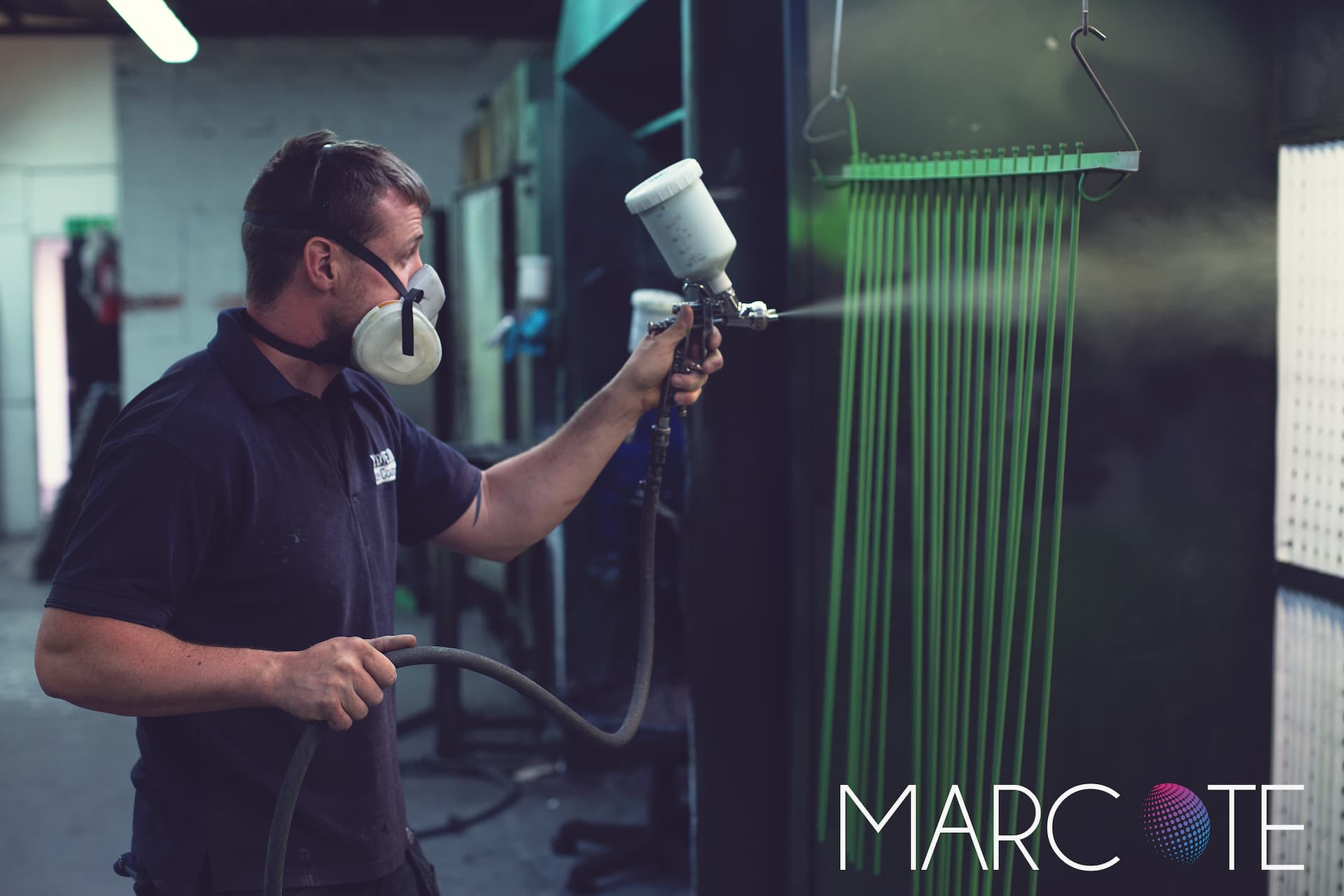For manufacturing applications, applying a non-stick coating to key machinery contact points such as conveyor belts, weigh pans, chutes and moulds can make clean down quicker, maintenance faster and hygiene better.
There are performance benefits to the right non-stick coating too, like improved production flow rate and product release to prevent bottle necks and reduce the need for human input in key areas of the process.
Here, we look at the science behind non-stick coatings, like Teflon/PTFE and Xylan.
The non-stick coating basics
Put simply, a non-stick coating is a surface treatment that has been engineered to reduce the ability of other materials to stick to it. Probably the most well-known brand of non-stick coating is Teflon, a group of Polytetrafluorethylene (PTFE) compounds invented by accident in the late 1930s. It’s appealing corrosion-resistant properties and lowest coefficient of friction were revolutionary for the engineering sector and it has set the bar high for subsequent non-stick coating technologies ever since.
Teflon and PTFE
Whilst Teflon is a brand of PTFE, the name is often used generally to describe this much wider group of materials. PTFE is the most commonly used synthetic Fluoropolymer, a fluorocarbon-based polymer with multiple carbon-fluorine bonds, characterised by high resistance to solvents, acids and bases.
PTFE (Teflon) can be applied to any substrate that does not display excessive pits, porosity or excessive roughness. Substrates should also be free from sharp corners or edges and must be dimensionally and thermally stable at the required bake temperature (up to 400°F/204°C).
Before application, the metallic substrate is roughened by abrasive blasting and may be electric-arc sprayed with stainless steel to create an irregular surface that the PTFE can successfully and evenly adhere to.
When it comes to PTFE coatings, more layers equals better performance, with between one to seven layers being the typical range. Each layer is sprayed or rolled on with a set curing time in between each one. Any PTFE coating will lose its non-stick properties if overheated which means this particular type of non-stick technology isn’t suitable in applications where temperatures exceed 500°F/260°C.
Xylan
Some 30-years after the accidental discovery of Teflon, scientists discovered that adding fluorinated ethylene propylene to the hard, adhesion-promoting binder resins present in the compound structure of Teflon created an alternative one-coat product that was more durable than the earlier Teflon materials. This was the start of Xylan, a fluropolymer-based industrial coating that is applied in a thin film and is known to improve durability, reduce friction, increase wear resistance and provide those all-important non-stick properties.
Compared to Teflon, Xylan compounds are commonly selected for heavy load or high temperature applications, or chemical and corrosive environments. It is widely used in the automotive industry for components like piston rings and skirts, and in the oil and gas industry for fasteners, nuts and bolts. It offers a coefficient of friction as low as 0.02 and a wide temperature operating range of between -250°C to 285°C as well as being more pliable than many other non-stick coatings.
Xylan is a liquid and can only be applied using a HVLP spray gun in either a single coat, a two-coat primer and top-coat system or a three-coat primer, mid-coat, top-coat conventional and reinforced (filled) process. Typically, the fluoropolymers used in the manufacture of Xylan are PTFE, Perfluoroalkoxy alkanes PFA and Fluorinated ethylene propylene FEP.
Find out more
You can discover more about Teflon and Xylan on our website or read our guide to selecting the right coating here. To discuss your non-stick coating requirements in more detail and receive expert advice on which is the right option for your application, call our knowledgeable team of experts today on 01543 419 904.

